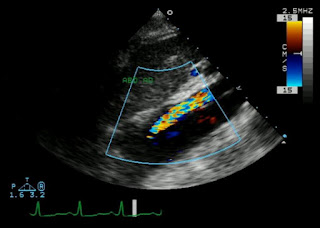A 70 year old smoker with hypertension, hyperlipidemia, diabetes, peripheral vascular disease s/p femoral-femoral bypass, coronary artery disease s/p 4 vessel CABG presents with recurrent episodes of abdominal pain. The pain is dull, crampy, epigastric, usually beginning within an hour after eating, lasting about two hours. He has tried famotidine and pantoprazole without any relief. It is worse with ice cream, french fries, and fried chicken. Review of systems notes nausea, vomiting, early satiety, and weight loss. The patient is worried about cancer. Exam reveals a cachectic man with an abdominal bruit, but is otherwise unremarkable. There is no tenderness or pain to palpation. Routine laboratory tests, chest and abdominal radiographs, endoscopy, and colonoscopy are all negative. Lateral angiogram and angiogram with contrast injected into the inferior mesenteric artery are shown below.
Challenge: What's your diagnosis?
Images shown under Fair Use.




















